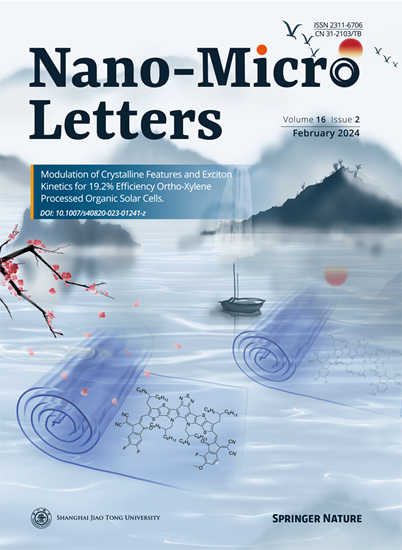B-Bridge Regulated Asymmetric Dual-Atomic Catalysts for Synergistically Enhanced Styrene Mineralization and CO2 Reduction
IF 36.3
1区 材料科学
Q1 Engineering
引用次数: 0
Abstract
Highlights
-
Bifunctional atomic catalyst for dual environmental-energetic applications.
-
Unprecedented catalytic performance: simultaneously 99% flowing-phase styrene degradation and 98% FECO at 1000 mA cm−2.
-
Boron incorporation for accelerated electron transfer and optimized eCO2RR microenvironments.
b桥调节的非对称双原子催化剂协同增强苯乙烯矿化和CO2还原。
开发创新的资源利用战略以实现可持续的废物再循环转化为燃料是非常可取的,但设计具有双重高效率的具有成本效益的双功能催化剂仍有待探索。类芬顿反应依赖于增强过氧单硫酸盐(PMS)吸附和加速界面电子转移来提高动力学速率,而CO2还原受到动力学缓慢和析氢反应竞争的限制。本研究通过将硼原子引入富含官能团的生物质衍生壳聚糖底物中,构建了具有双原子活性位点的双功能催化剂(nfe - bnc),优化了原子配位环境。原位实验和密度泛函理论计算表明,b原子调制促进了碳衬底缺陷的富集,而金属位与“硼电子桥”之间的电荷调谐效应优化了PMS的吸附构型。这种协同作用促进了界面电子转移,使nfe - bnc的CO2吸附能力提高了6倍。所制备的nfe - bnc具有显著增强的催化活性和选择性,对流动相挥发性有机污染物的降解效率在2 h内达到99%,稳定矿化率超过60%,同时在流动电解槽中实现了1000 mA cm-2的大电流密度和98%的CO法拉第效率。本工作为合理设计具有成本效益的功能催化剂,实现碳循环利用开辟了新的途径。
本文章由计算机程序翻译,如有差异,请以英文原文为准。
求助全文
约1分钟内获得全文
求助全文
来源期刊

Nano-Micro Letters
NANOSCIENCE & NANOTECHNOLOGY-MATERIALS SCIENCE, MULTIDISCIPLINARY
CiteScore
32.60
自引率
4.90%
发文量
981
审稿时长
1.1 months
期刊介绍:
Nano-Micro Letters is a peer-reviewed, international, interdisciplinary, and open-access journal published under the SpringerOpen brand.
Nano-Micro Letters focuses on the science, experiments, engineering, technologies, and applications of nano- or microscale structures and systems in various fields such as physics, chemistry, biology, material science, and pharmacy.It also explores the expanding interfaces between these fields.
Nano-Micro Letters particularly emphasizes the bottom-up approach in the length scale from nano to micro. This approach is crucial for achieving industrial applications in nanotechnology, as it involves the assembly, modification, and control of nanostructures on a microscale.
 求助内容:
求助内容: 应助结果提醒方式:
应助结果提醒方式:


